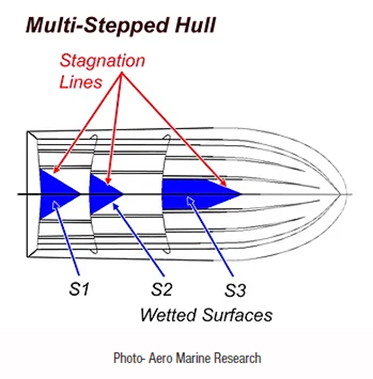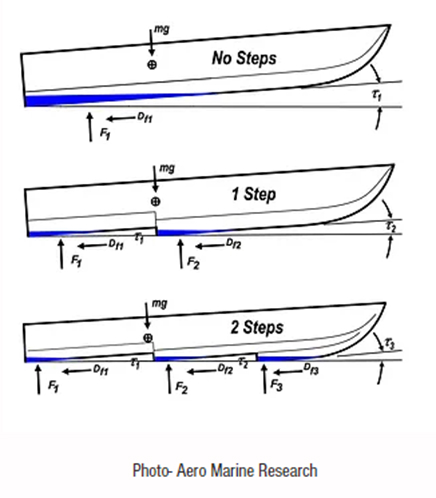Why The Catch 27 Crossover Opts Against a Stepped Hull Design.
The beauty of crafting a boat from scratch lies in the freedom from constraints, allowing for thorough consideration of all options to select the most suitable design. While exploring various possibilities for the Catch 27 Crossover, we deliberated extensively on incorporating a stepped hull design but ultimately concluded that it wasn’t the optimal choice for our application. Here’s our reasoning:
Stepped hulls have witnessed a surge in popularity over the past decade, yet their origins trace back much further. In 1872, Englishman Rev. Ramus pioneered the concept, which gained traction in the early 1900s with the rise of more powerful gasoline engines. Over the last three decades, significant advancements by astute engineers have further refined this technology.


This phenomenon occurs as negative pressure forms behind the steps, drawing in air from the sides.
As boat speed increases, more air is drawn in, resulting in less hull drag through the water.


